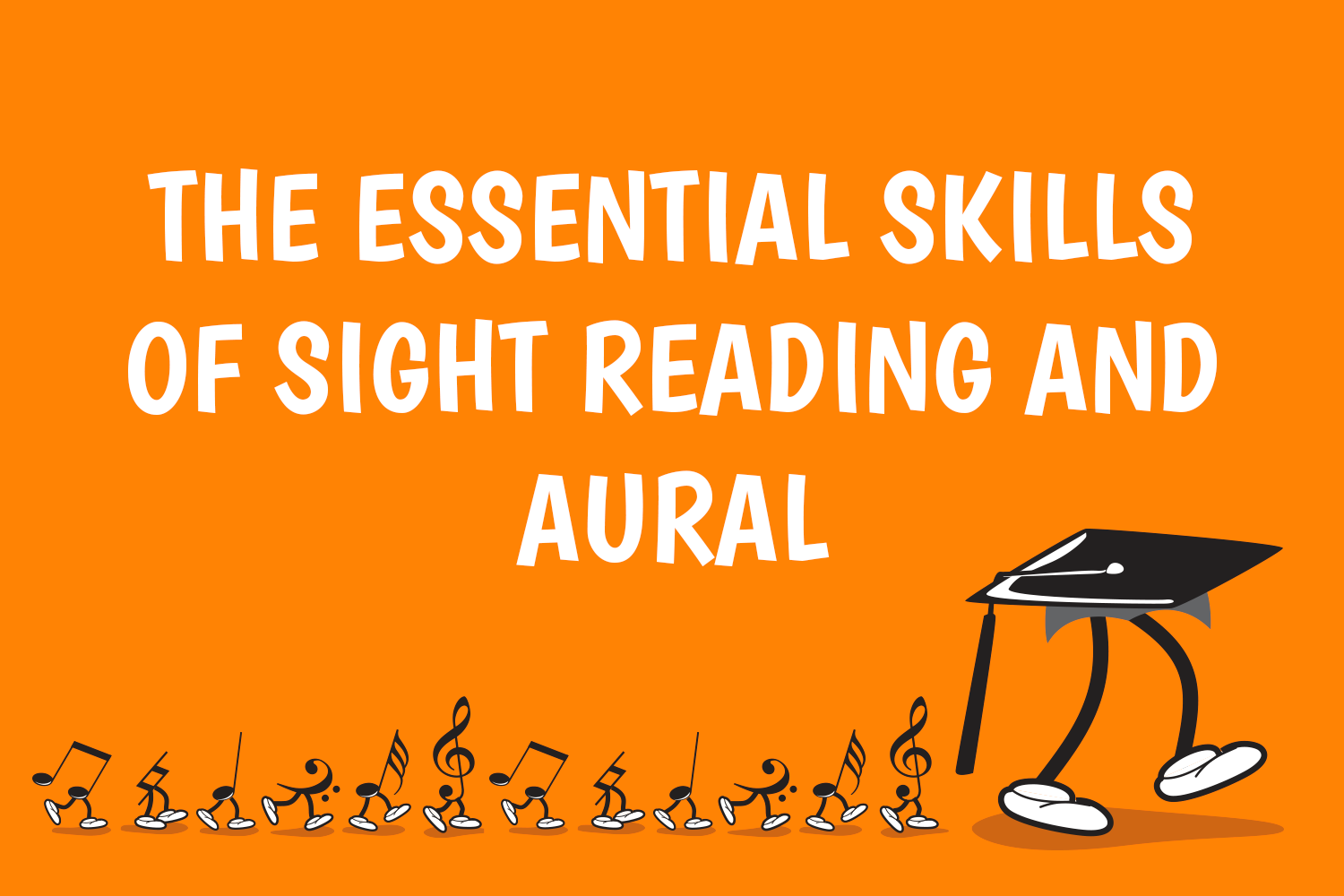The Essential Skills of Sight Reading and Aural

Sight reading and aural skills are essential components of being a good musician. It is so important to develop these skills, and not to concentrate solely on performance skills. Good sight reading and good aural gives you access to any music, any time, for life.
Good sight reading is a skill that eludes many a good pianist (or any instrumentalist, but I’m going to focus on piano skills here), and frustrates both student and teacher. The first thing a student must understand is that sight reading is a completely separate skill to virtuoso performing. Practising a certain Mozart sonata over and over for 6 or 8 months will not be helpful when trying to sight read a different Mozart sonata.
Ask anyone who is a good sight reader how they came to be so. They will tell you: because they do it ALL THE TIME. There is no-one ‘born’ a good sight reader, just like there is no-one who is born able to read English fluently without having read a lot. The only way to become a good sight reader is to sight read constantly.
However, for beginner sight readers (who are sometimes also advanced pianists!) who are frustrated with their ability it is essential to break down the elements of sight reading. When we first start to read English, we are taught the alphabet and then how to recognise patterns. We start with simple repetitive readers and gradually move on to more complicated books. This is how we should address sight reading!
There are many factors involved in successful sight reading:
· Rhythm reading
· Random note reading
· Melodic pattern reading
· Chord reading
· Melody playing (combines elements 1-3)
· Fingering
· Two hands reading/playing (combines 1-4 and requires coordination)
· Playing with dynamics/articulation (combines all elements)
· Playing under pressure (because it’s most often tested in an exam!)
At first, each of these concepts must be presented separately, and then gradually combined. A student who can master the list above will be a fabulous sight reader. But this can only come with practice.
Many students believe it is not possible to practice sight reading. They maintain that once you’ve practised it, it’s not sight reading anymore! This is true, of course… but the student has missed the point. When we pick a book off the bookshelf and open it up to read, we have no idea what the words inside are going to be, we just start reading. ‘Practising’ sight reading means opening up a piano book and playing what’s on the page, and then moving on to another book, and another, and another. The more we do it, the faster we get at transferring what we see on the page into actual sound.
It is a similar story with aural training. Many students are not exposed to aural activities until 3 or 4 weeks before an exam, if at all. And they wonder why the tests are hard! Tragically, the aural component is often ‘written off’ as a small and unimportant part of the exam.
The irony of this situation is that we, as humans, all have innately good aural skills. How many people have told you they are tone deaf? There is almost nobody in the world who is actually tone deaf. If you speak with inflection, you have pitch! If you can change gears in your manual car, you can hear changes of pitch! When you differentiate between an English accent and an American accent, when you phone your mother and know instantly from her tone of voice you’ve done something wrong – these are all finely tuned aural skills, and we all have them.
So if we all have good innate aural skills, it’s really a matter of how developed our skills are in relation to music, and in particular in relation to the aural component in a practical exam.
There are many students who have great musical potential and ‘a good ear’. My son, for example, has near perfect pitch. It’s a little erratic, but most days he can name any note you play him on the piano. But when it comes to the aural component in an AMEB exam, this ability does nothing for him. He struggles quite a bit with the singing and memory activities and has to work really hard on them.
So aural skills must be practised, just like the repertoire and just like the sight reading, for an exam. It is a specific set of skills that is tested in the exam, and these must be addressed with specific exercises. Not only this, but it doesn’t work to address them the week before the exam! Aural cannot be crammed. Confidence in aural only comes with time, patience and above all… exposure to it!
